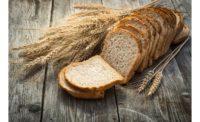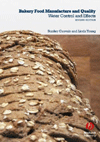Americans’ consumption of bread when dining out or getting takeout is on the rise, according to a nationwide survey conducted by The Harris Poll and commissioned by General Mills Foodservice. In fact, two-thirds of Americans (67 percent) report eating more bread than they normally would when dining out or ordering takeout in the past year and three in five Americans (60 percent) say they would rather indulge in a good bread item than dessert when dining out.
General Mills Foodservice together with Pillsbury, its premier baking brand for foodservice professionals, breaks down the results of the recent poll and shares tips for foodservice operations to build out their bread basket and expand their menu with low-labor, scratch-like bread offerings. The nationwide poll surveyed more than 2,000 adults ages 18 and over to learn how they are consuming bread when dining out or ordering takeout.
“Bread and the associated carbs used to get a bad rap, but we are really seeing consumers come back to bread,” says Chef Curt Wagner, part of the Chefs of the Mills team with more than 30 years of baking experience. “From home bakers attempting to make sourdough and banana bread to diners seeking out the bread items they love but don’t have the time or skills to make on their own, it appears we are all craving and eating more bread. I expect to see a resurgence of indulgent and creative bread menu items in the year ahead.”
Results from the poll show that consumers who are eating more bread when dining out or ordering takeout during the past year are doing so because it is offered as a complimentary “starter” (52 percent), it’s comforting (45 percent), to fulfill a craving (36 percent), to indulge (29 percent) or reward themselves (25 percent). Favorite bread items when dining out or ordering takeout include: garlic bread (61 percent), rolls (47 percent), French bread (35 percent), biscuits (34 percent), and croissants (31 percent).
Other survey findings report:
- Nearly three-quarters of Americans say that when dining out, their meal includes some type of bread item as a starter or part of the main course and say that bread is something they look forward to when they are dining out or ordering take-out (both 73 percent).
- 87 percent of Americans say they enjoy being offered a free starter of fresh bread items (e.g., a bread basket, garlic bread) when dining out.
- 63 percent of Americans are more likely to order a sandwich if it's made with a unique bread/sandwich carrier (e.g., biscuit, waffle, croissant) than if it's made from regular bread.
“Bread is more than an everyday staple, it’s one of the greatest comfort foods that diners really look forward to and enjoy when eating out or ordering takeout, which gives restaurants and foodservice operations an opportunity to shine,” said Chef Curt. “There are so many ways operators can move beyond basic bread to elevate their menus and use bread in new and interesting ways.”
Tips for Menu Breadwinners:
- Offer a complimentary bread basket or a signature bread item (e.g., sticky buns, popovers, biscuits) as a gesture of hospitality to welcome your guests.
- Surprise and delight diners by using bread items in unexpected ways (e.g., a biscuit as a unique sandwich carrier or a croissant at the base for a decadent dessert).
- Reduce waste by repurposing day-old bread items. For instance, unused bread or bagels can be sliced up, brushed with olive oil, seasoned and toasted in the oven to create croutons or chips that can be part of a bread basket or packaged for resale.
- Maximize the breads you make across your menu, from morning till night. Croissants, for example, are a morning staple but can also be a great way to elevate sandwiches throughout the day, accompany salads or soup, and serve as the base for delicious desserts.
- Take the burden off staff and minimize waste with easy-prep, freezer-to-oven bread items that can be baked as needed.
Survey methodology:
This survey was conducted online within the United States by The Harris Poll on behalf of General Mills Foodservice from October 26–28, 2021 among 2,035 adults ages 18 and older. This online survey is not based on a probability sample and therefore no estimate of theoretical sampling error can be calculated. For complete survey methodology, including weighting variables and subgroup sample sizes, please contact sarah.peterson@genmills.com.






